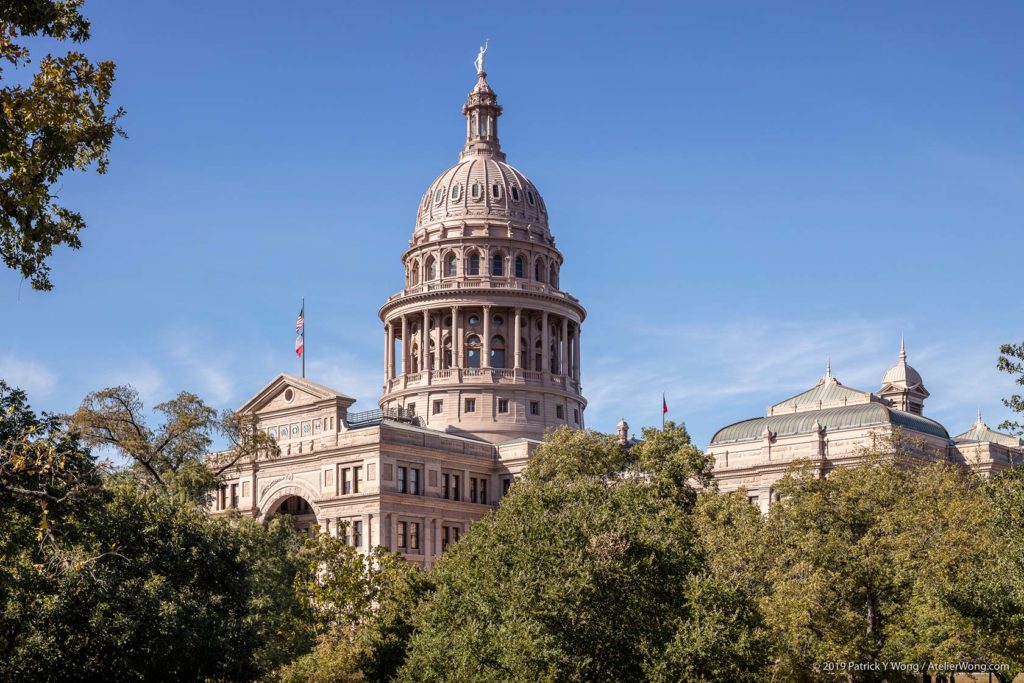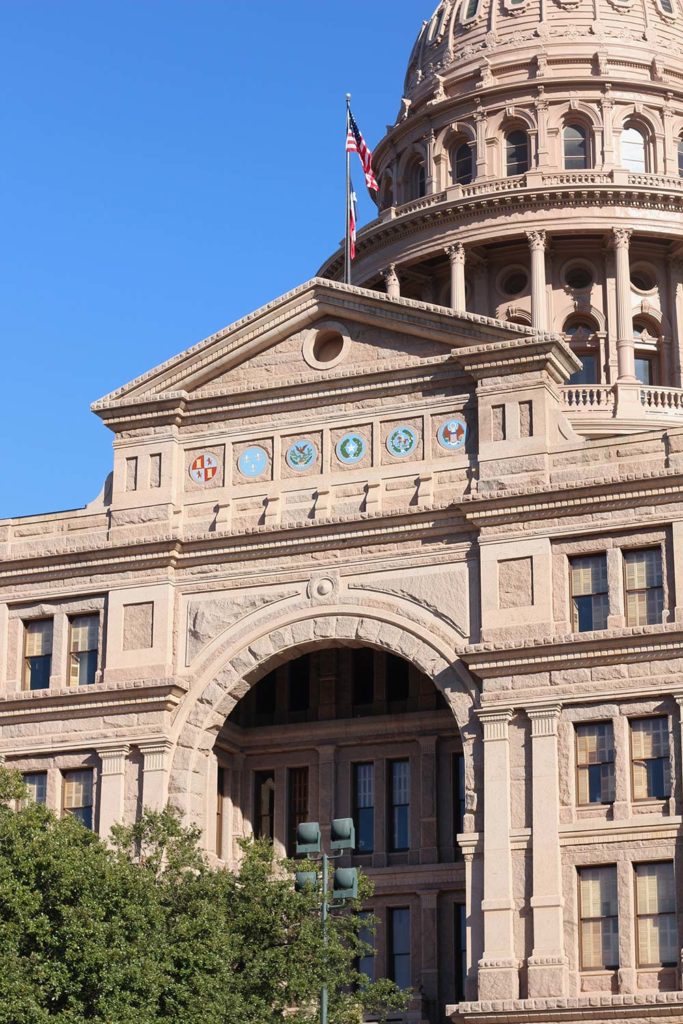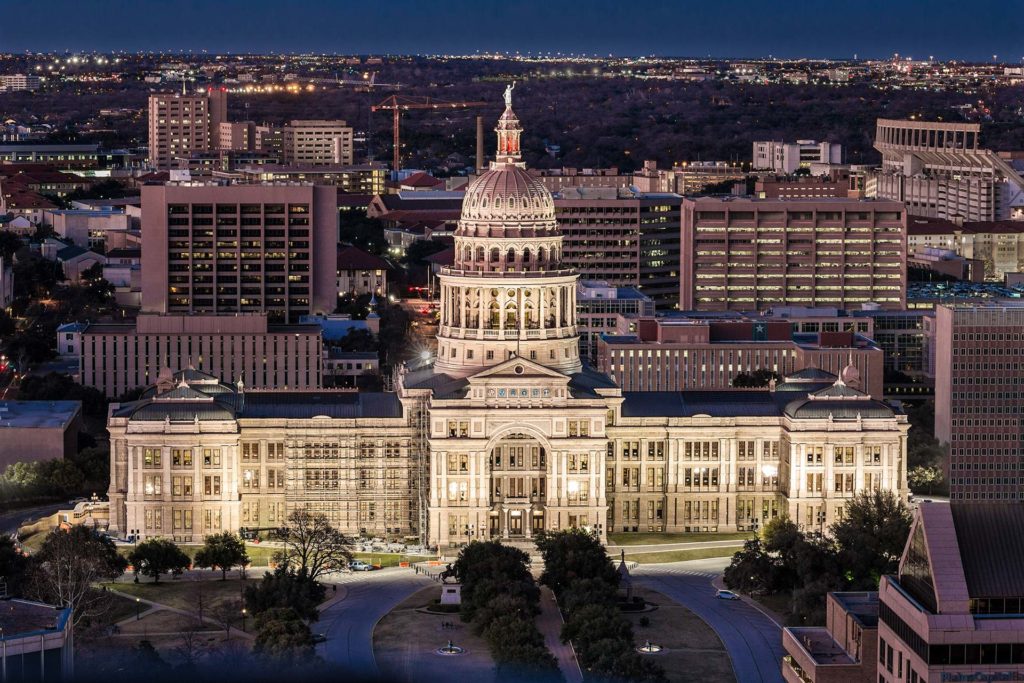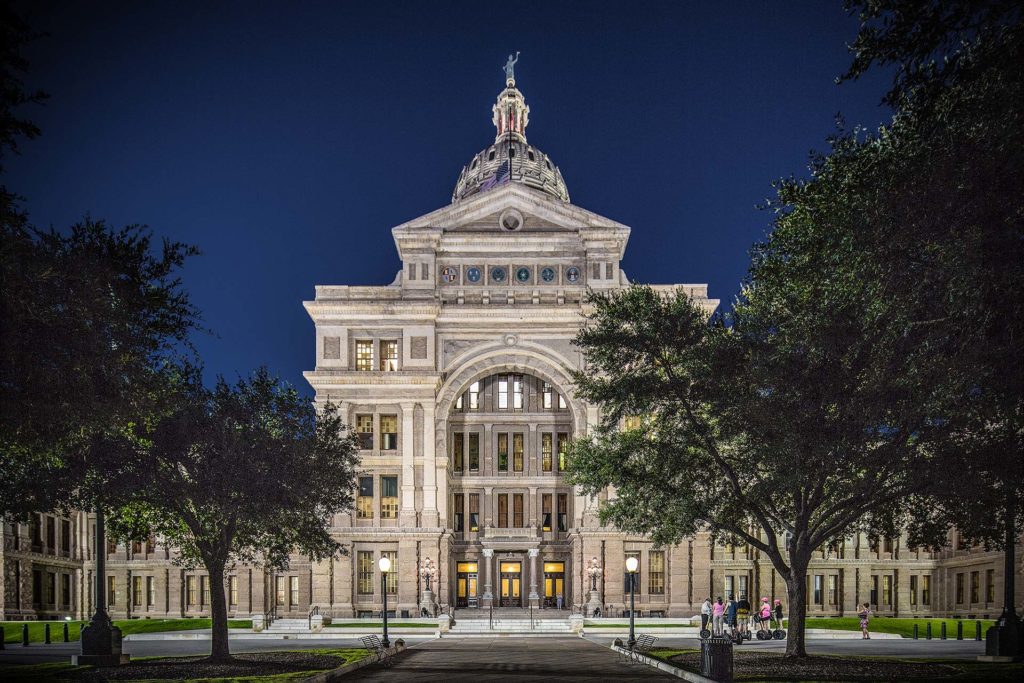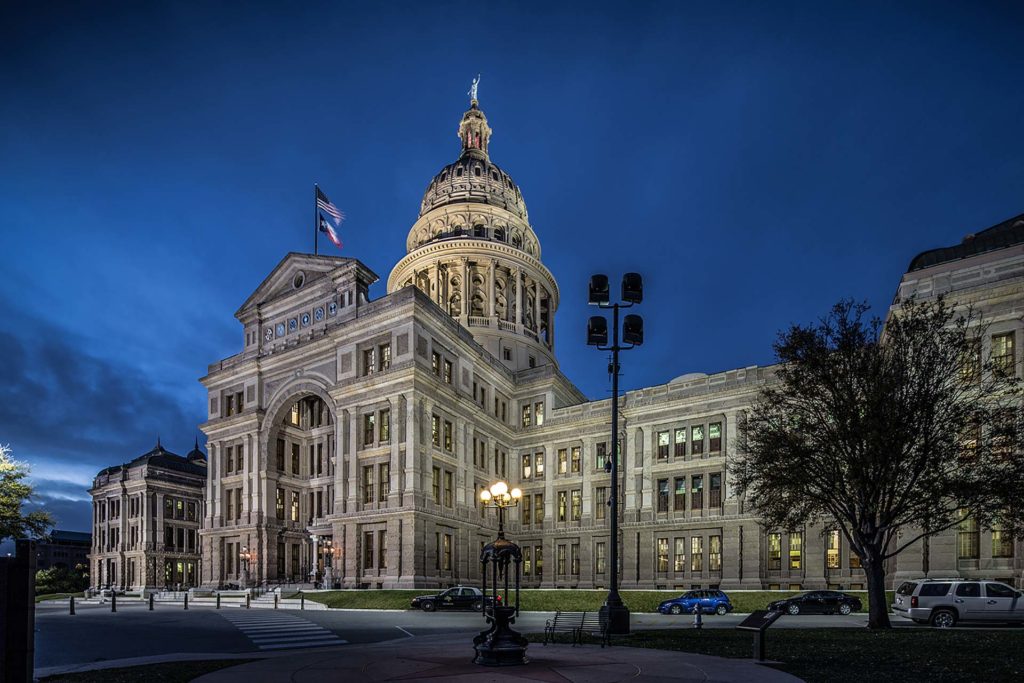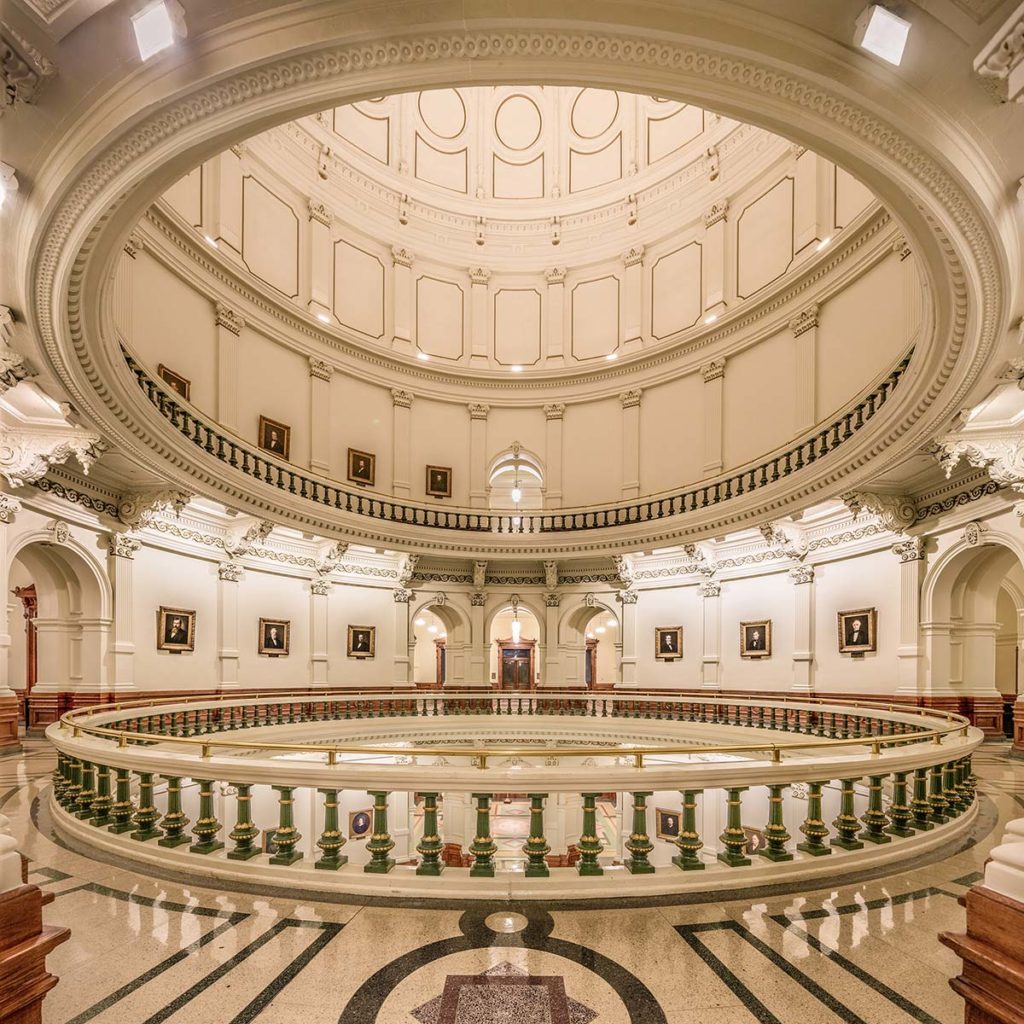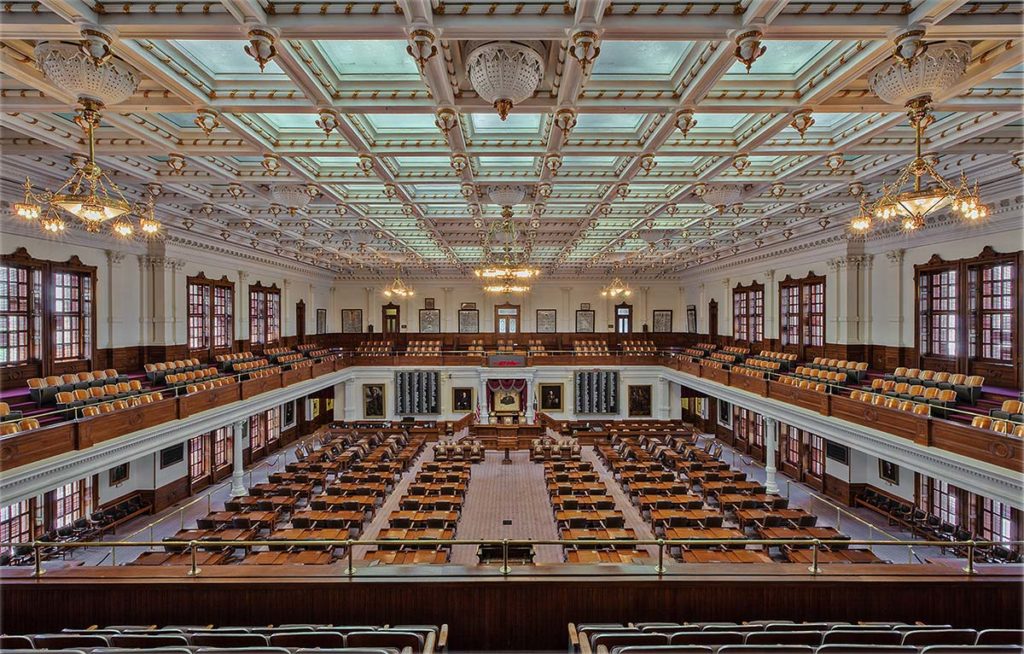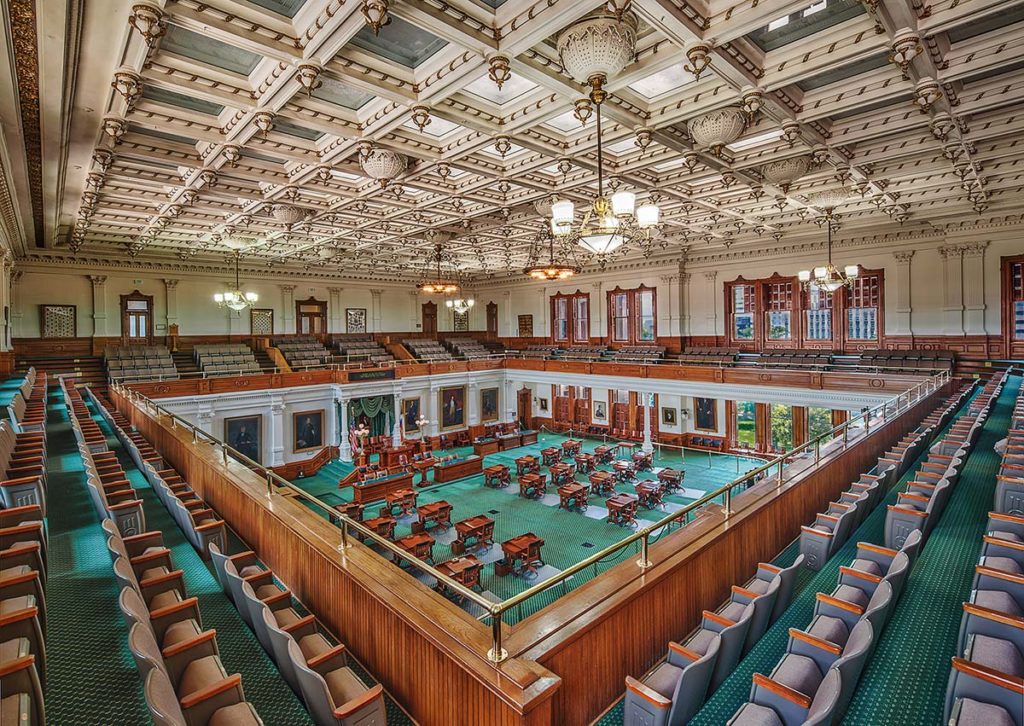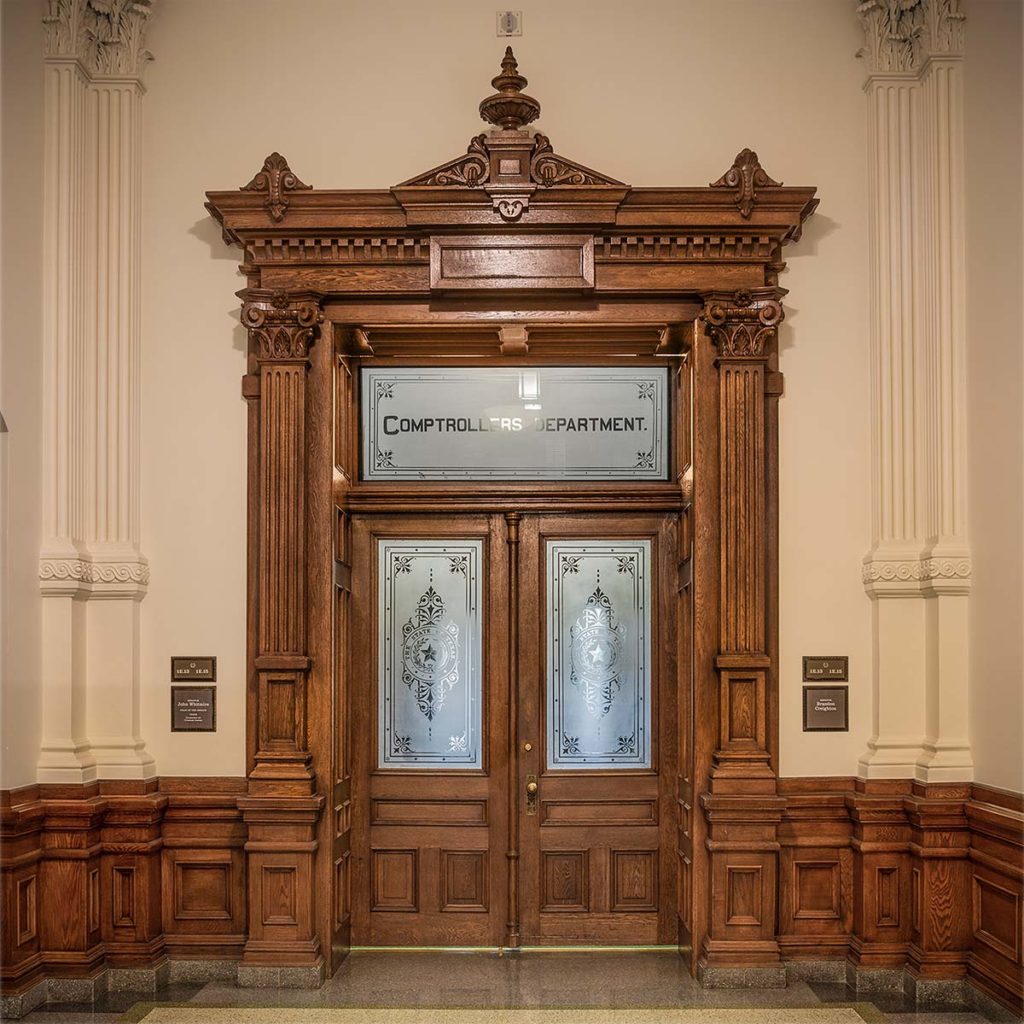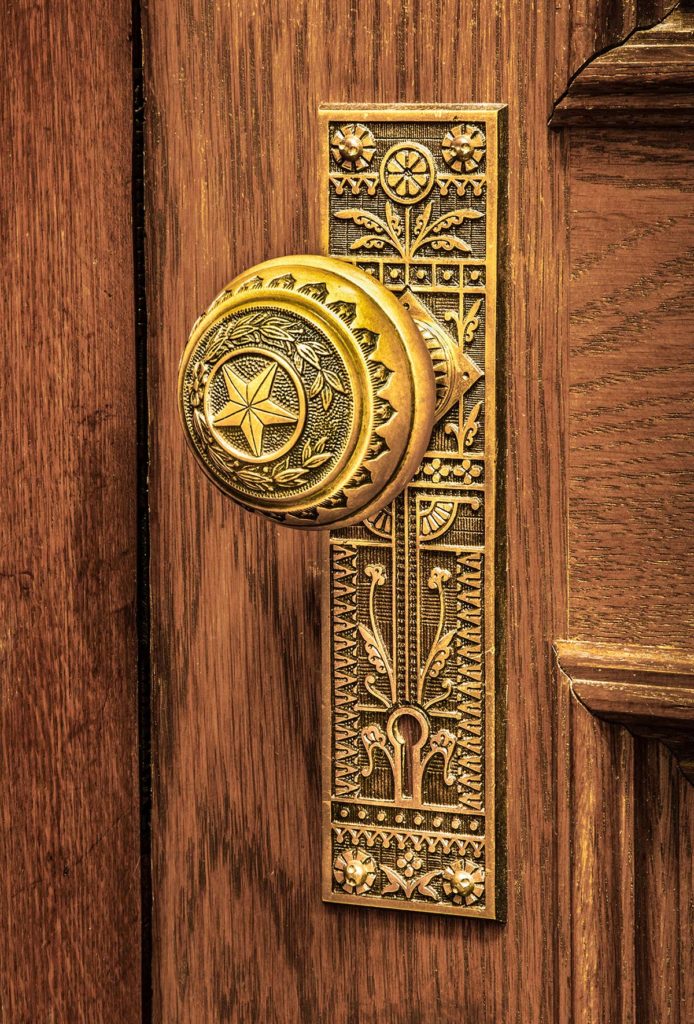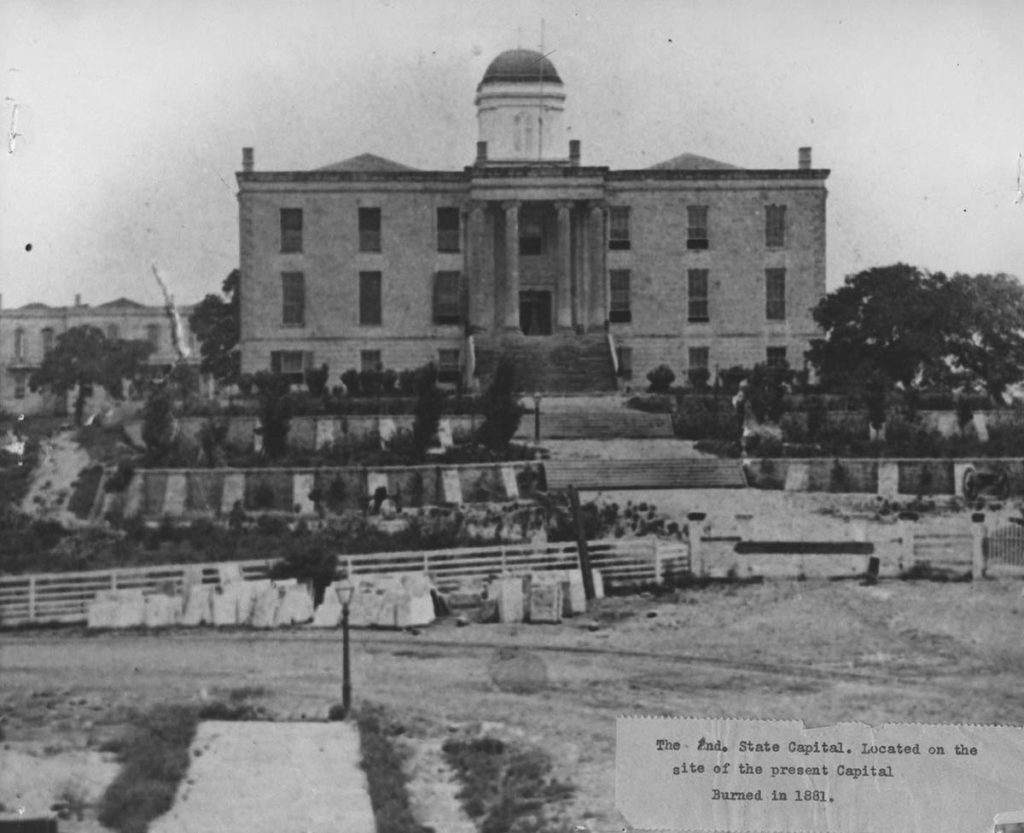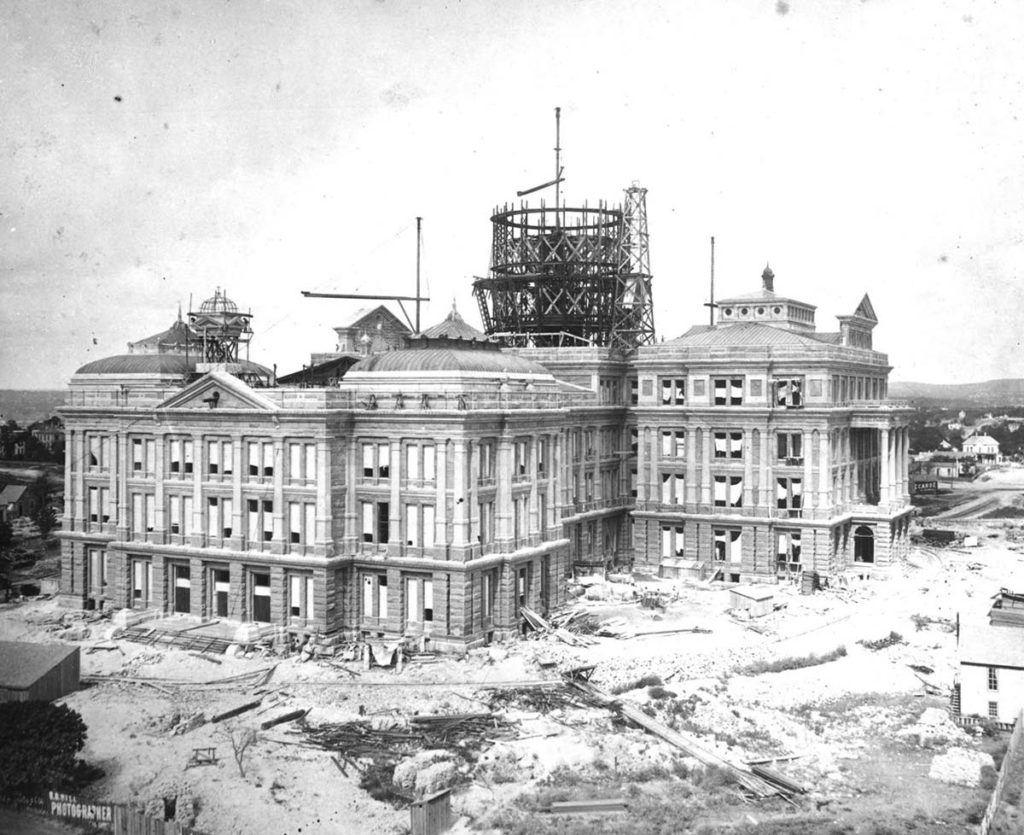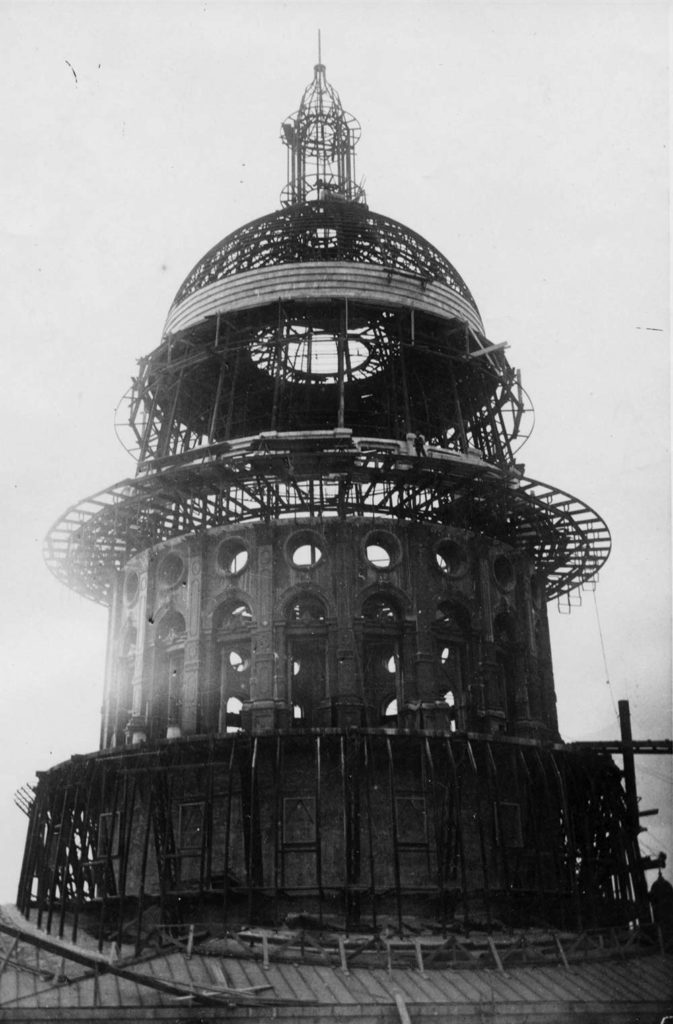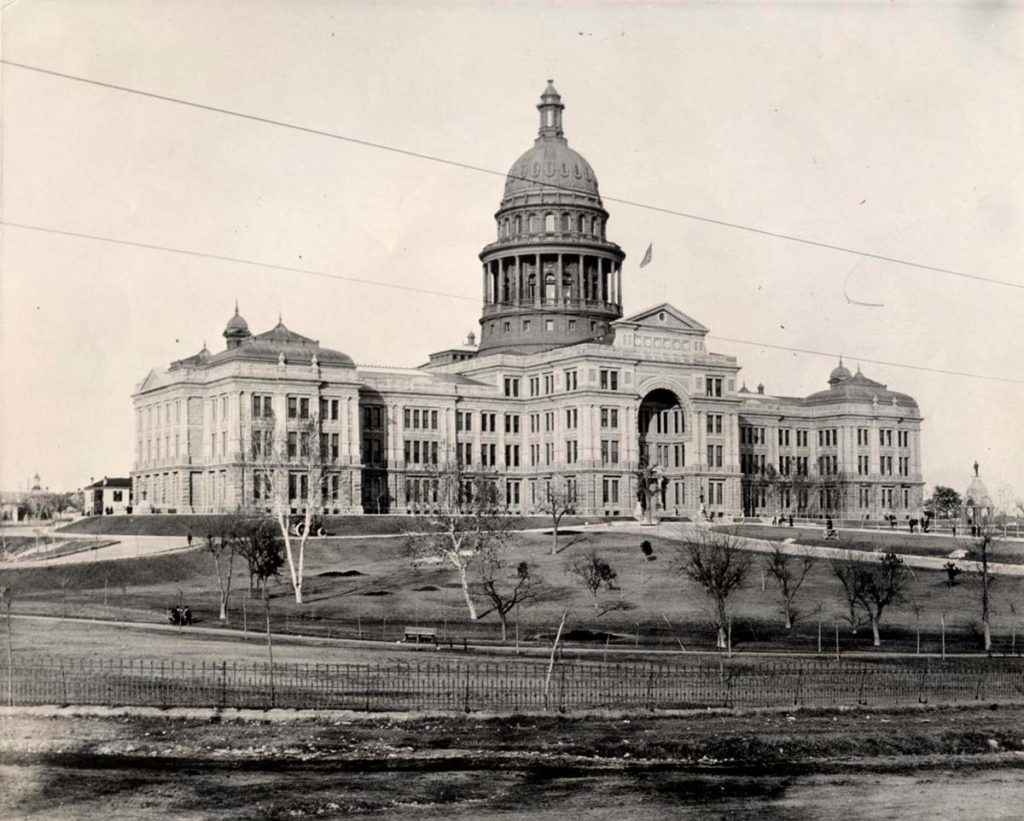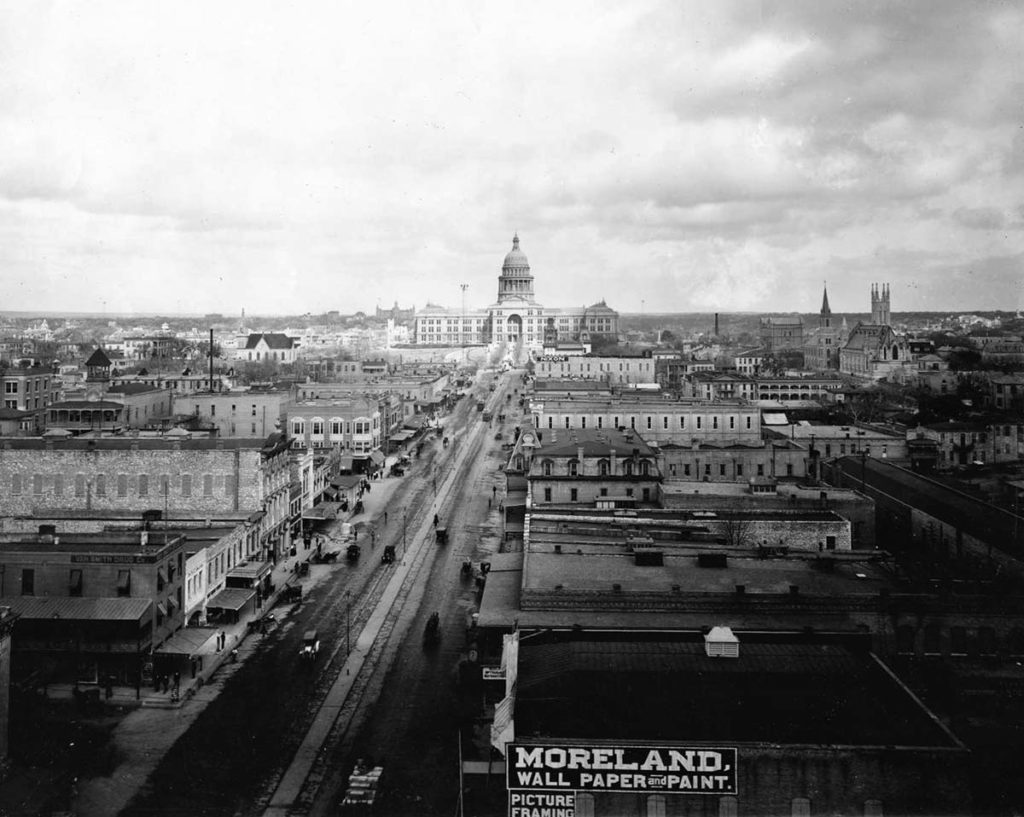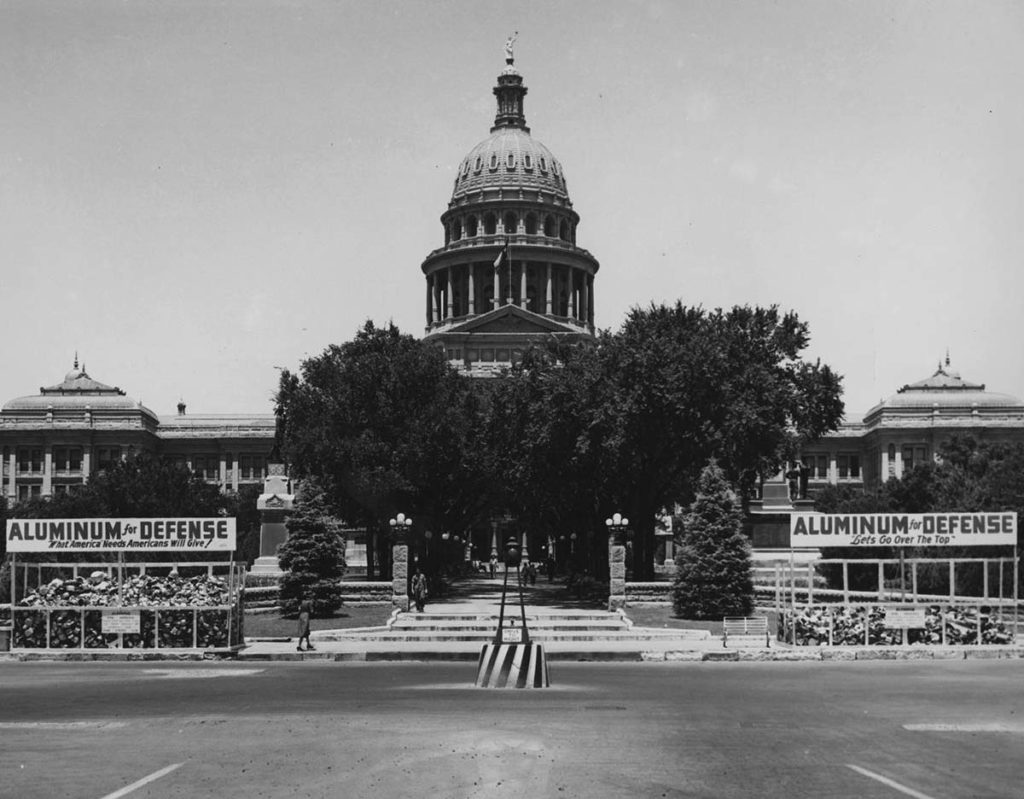Rising 311 feet (14 feet higher than the U.S. Capitol, upon which it is modeled) the Texas State Capitol overlooks Austin from its impressive perch at the end of Congress Avenue. As a piece of architecture, the Capitol serves multiple functions: it symbolizes the city’s political importance, provides a geographical reference point for miles around, and plays an integral role in defining Austin’s sense of place. Even among an increasingly crowded skyline, the great arch and dome of the Capitol stand out today; imagine how they must have dominated the horizon 100 years ago.
The presence of the Capitol on Austin’s skyline has been deemed so important that its visibility from certain viewpoints is protected by city and state law. As buildings grew taller in the mid-20th century, Austinites realized that the dome’s visibility was under threat. In 1983, legislators passed a bill establishing 30 protected “Capitol View Corridors” ranging in length from 1,700 feet to over five miles. Within these corridors, the height of new construction is strictly limited in order to protect views of the Capitol dome. While these corridors have at times been a source of frustration for developers, the views they protect form a significant part of Austin’s landscape, and their protection represents a unique recognition of architecture’s role in our shared cultural heritage.
For 84 years, the Texas State Capitol was the tallest structure in Austin. After its predecessor burned to the ground in 1881, a national competition resulted in the selection of Detroit-based architect Elijah E. Myers, who proposed a design in the style of the 15th-century Italian Renaissance, complete with round arches, classical columns, and a symmetrical composition. The state paid the contractor with three million acres in the Texas panhandle, which later became the largest cattle ranch in the world (not a bad deal). Over 1,000 workers—many of them convicts or migrants—labored over the Capitol’s construction for seven years, during which 188,000 cubic feet of “Texas pink” granite were transported to the site from a quarry 50 miles away. The result is a magnificent edifice that is at once imposing and delicate, rugged and refined.
The Capitol is surrounded by 22 acres of landscaped grounds filled with monuments to Texas history; wander up the oak-shaded promenade to the grand four-story front porch (with a detour to the powerful African American History Memorial, on your left). As you enter, notice the ornate, custom-made bronze hardware on the doors. Passing through a hall of iron columns with Corinthian capitals, you will arrive at the central rotunda, which is actually the inner layer of a “double dome” structure fabricated in Belgium. The rotunda measures 266 feet from the terrazzo star on the floor to the bronze star in the crown. If you should happen to overhear a disembodied snippet of conversation, you’re not hallucinating; the rotunda’s shape creates a “whispering gallery,” a phenomenon in which faint sounds echoing across the dome may be heard on the opposite side.
To the east and west of the rotunda are the two legislative chambers—each restored in the 1990s to their early-20th century grandeur. The state’s 31 senators have noticeably more legroom than their counterparts in the 150-seat House of Representatives. The skylights that once illuminated both chambers have been replaced with more energy-efficient electrical imitations. As a final flourish, notice the custom-made chandeliers, whose light bulbs spell out “TEXAS” inside five-pointed stars. – Bud Franck
